SANCHETI HEALTHCARE ACADEMY Organized WORKSHOP ON
“MOTOR RELEARNING PROGRAM FOR STROKE REHABILITATION”
…..A Practical Approach
On 16th and 17th August 2014
Course instructor
Dr. Gajanan Bhalerao (PT)
Master of Physiotherapy (Neurosciences) Associate professor
Sancheti Institute College of Physiotherapy Shivajinagar Pune.
Contact hours – 16
Eligibility – Clinical Therapist,
Registration fees: – Rs 2000 per candidate.
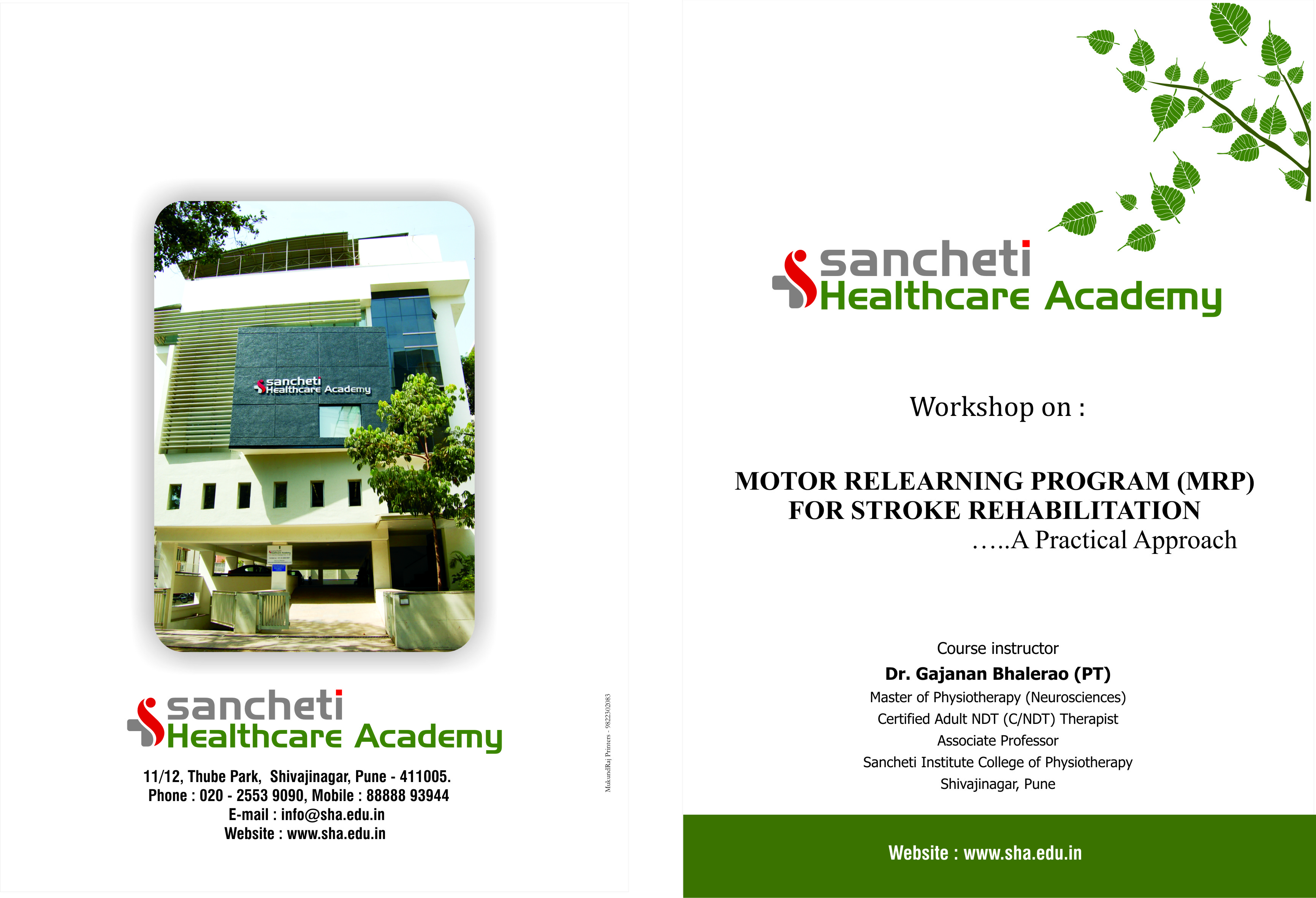
In this course 44 students, clinical therapist and teachers attended the work shop. The workshop included the motor control theories, different introduction approaches fours steps of MRP Assessment . Different activities of daily living and assessment and treatment in these activities is taught. activities such as Training of Supine to sit, Training of Sitting Balance, Training of Standing Balance,Training Of Standing Up & Sitting Down, Training of Upper Limb control, Shoulder hand syndrome, Gait Training, Orthotic prescription and management of Genu recurvatum.
Participant were taught how to set the goals according to task analysis and lifestyle, contextual and environmental factors in his own home/village/town/city.
Practical demos of treatment on patients was shown.
Workshop schedule
DAY ONE 16/08/14
| Time |
Topic
|
| 8 -8.30 am |
REGISTRATION AND BREAKFAST |
| 9.30 -1.00 am |
INTRODUCTION |
| Stroke anatomy and physiology |
| Localization of lesion |
| Theories of motor control |
| Neurophysiological approaches(their differences and limitations) |
- Muscle Re-Education Approach
- Neurotherapeutic approach
Sensorimotor approach
Movement therapy approach (Brunnstrom,)
Bobath approach
PNF approach (Knot and Voss)
- Task- specific approach system model of motor control
Motor relearning program for stroke (1980s)
Contemporary task-oriented approach (1990s)
|
| What is importance of the task specific approach? (Carry over, Neuroplasticity) |
| |
General Assessment of stroke & common problems |
| 1-2pm |
LUNCH |
| 1.00 – 5.00 PM |
MRP Assessment |
| Step 1 |
Analysis of task |
| Step 2 |
Practice of missing component |
| Step 3 |
Practice of task |
| Step 4 |
Transfer of training |
| GUIDELINES & STEPS FOLLOWED |
| Training of Supine to sit |
| Training of Sitting Balance |
| Training of Upper Limb control |
| 5pm |
QUESTIONS & FEEDBACK |
Day Two 17 /08/ 14
| Time |
Topic |
| 8.00 AM |
BREAK FAST |
| 9AMTo1.00 PM |
Training Of Standing Up & Sitting Down |
| Training Of Standing Balance |
| Orthotic prescription |
| Gait Training |
| 1.00 pm to 2.00 pm |
LUNCH |
| 2-3.30pm |
Complications and its management |
| Shoulder hand syndrome |
| Spasticity |
| Genu recurvatum |
| 3.30 pm – 5.00 pm |
Pool of Evidences of Stroke Rehab |
| Case discussions |
| 5.00 pm |
QUESTIONS & FEEDBACK |
The workshop focuses on practical demonstration & handling techniques in the Neuro rehabilitation. The workshop also aims at enhancing the skills of the participants & better understanding of problems commonly encountered in the management of stroke patients. Besides the workshop will emphasis on insight into unique case studies as well.
FEEDBACK OF MRP WORKSHOP
on 16th & 17th Aug 2014
POSITIVE POINTS –
- The PPTS were short and precise, clinical assessment was long and required.
- Excellent workshop; it was more beneficial because we had learnt things on the patients.
- Food was good too.
- Great workshop, teacher was good , and friendly workshop.
- Preparations made by college were systemic.
- Was the first workshop ever attended and really liked it, enjoyed a lot, got to know my mistakes while treating patients.
- Explanation of theory was simplified.
- Optimally arousing workshop.
- Teaching methods and practical sessions.
- Demo on patients was good.
- Understood MRP for the first time.
- Will help patients in Nanavati hospital .
- Practical approach to treat hemiplegics.
- Knowledge with fun workshop.
- Regular attitude with patients of Sir.
- More task-specific.
- Excellent environment.
- Motor control theories were made easier.
- Interaction with students was good.
- Not sleepy at all.
- Learnt the importance of BOS in every movement.
- Basic concepts got cleared today.
- Totally new concept of rehab.
- Biomechanics concept was taught again.
NEGATIVE POINTS-
- The teaching speed bacem fast sometimes.
- Got heavy post-lunch.
- Include all participants in the activities.
- More explanation of every specific activity, assessment.
- Vast topics so slow bombardment of topics is advised.
WHAT I HAVE LEARNT TODAY?
- Behavioral sciences.
- The body follows the biomechanics and so should we while treating the patient.
- Learnt to give task specific activities.
- Assess functional activity directly without checking MMT, tone, reflexes.
- How the treat the lateral slouch
- Use of heel raise – sit to stand.
- Without touching perform the activity.
- Theories of motor control.
- Constraint is not only resisting but preventing an abnormal, unnecessary movement.
- Self confidence is important.
- Communication with the patient
- Task-specific
- Postural components are important to target.
- Analyse the function and treat.
- Learnt how to treat patients without much energy expenditure.
- ‘What not to do’ in treatment.
- Command to patients is important.
- Line of gravity and centre of mass importance.
- Tangent- bridge concept.
- Analyse demand of task.
- New phrases- invite muscles, create opportunities.
FEEDBACK FORMS DETAILS








INDIVIDUAL FEEDBACK OF PARTICIPANT ON DAY 1 AND DAY 2.
MRP WORKSHOP DAY 1
Participant 1.
GOOD POINTS –
- The behavioral sciences was something new.
- Each component of sit to stand , supine to sit was practically amazing .
- In neurosciences not necessary that neural involvement makes an activity difficult but other system involvement should be considered also .
- Doubts were cleared.
WHAT DID I LEARN TODAY ?
- Theories of motor control
- Alignment
- Assessment
- Biomechanics
Participant 2
Good points –
- Understood well
- Simple language
- Functional assessment was taught well
What did I learn today ?
- How to change behavior of the patient ?
- Task specific activities
Participant 3.
Good points –
- biomechanics
- how to approach the patient
What I have learnt today ?
- the bioemchanics and its use in treatment
Participant 4
Good points –
- good food and tea
- nice way of diverting from topic and keeping us awake in lecture
Bad points –
- please explain basic terms
- teach simple things after lunch
what I have learnt today ?
- assessing functional activity and then treating like wise
- lateral slouch technique
- to give heel raise
Participant 5
Good points – ppts were good
Bad points –
- practicals would’ve been more beneficial
What ive learnt today ?
- Proper handling and commands beneficial
- Theories of motor control
- Practical sessions were good
Participant 6
Good points –
Biomechanics
Bad points –
What ive learnt today ?
- Motor control
- Reflex theory was taught well
- I learnt how to make others happy during therapy
Participant 7
Good points –
- Misconceptions were cleared
- Correlation with patients imeediately helped
What ive learnt today ?
- Simple and easy techniques were taught
- Energy expenditure was less
Participant 8 –
Good points –
- Learnt new words
- Concepts were cleared
What ive learnt today ?
- Good rapo with patients
- Behavioral attitudes of patients
Participant 9 –
Good points – handling was well taught
What ive learnt today ?
- Communication with patient was well explained
- Minimize therapist’s work by using proper biomechanics
Participant 10 –
Good points –
Understood what was taught and environment was good enough
Bad points –
Break of 5-5 mins in between
What ive learnt today ?
- View of treating the patients changed
- Functional tasks help patient
- Patterns of activities
Participant 10-
Good points – nice and interesting seminar
Bad points – Food was ok
What ive learnt today ?
Treating the patient in a better way
Participant 11 –
Good points – interesting lecture and learnt many things
Participant 12 –
Good points –
- liked the teaching method
- question answer session
Bad points – Breakfast
What i have Learnt today ?
- commands to the patients
- how to emotionally handle the patients?
Participant 13 –
Good points-
Everything
Bad things –
What ive learnt today ?
- totally new concept of treating patient
- biomechanics
- theories
Participant 14-
Good points –
Great workshop and it has helped a lot
What ive learnt today ?
Theories of motor control was taught really well
Participant 15 –
Good points –
- Task specificity
- BOS importance
- Anatomy and physiology of nerve conduction
What ive learnt today ?
Satisfied with all the knowledge gained.
Participant 16 –
Good points –
Easy an inspiring workshop and great environment
Bad points –
Saturation after lunch .
What ive learnt today ?
Motor control theories
Participant 17-
Good points –
Practical sessions were great.
Bad points – Nothing as such .
What ive learnt today ?
Rehab of patient can be done with commands
Participant 18 –
Good points –
Practical sessions and food were great .
What ive learnt today ?
Assessment and treatment should be the same
Participant 19 –
Good points –
Interaction with students and question answer session wee good
Bad Points – time constraint
What ive learnt today ?
New words like constraint, alignment , postural adjustments .
Participant 20-
Good points –
- Workshop content
- Hand on training
- Motor control theory
- Mrp in daily tasks
What ive learnt today ?
- Task oriented activities
- Analysation of patient
- Allowing patient to the prep phase and correcting it.
Participant 21
Good points –
Workshop was great
What ive learnt today ?
Approach is task oriented
Participant 22 –
Good points –
Workshop is excellent
Good interaction
Good food
Bad points –
Ppt
What ive learnt today ?
Informative session ,
Invite the muscle
Simple ways
Biomechanics
Participant 23-
Good points-
Practical sessions
Cleared common myths regarding stroke rehab.
Bad points –
Gets boring after lunch
What Ive learnt today ?
Old techniques were corrected.
Confidence was increased.
Create opportunities.
Participant 24-
Good points –
Great workshop.
New things .
Interaction was good.
Bad points- food
What ive learnt today ?
Task specific assessment .
Interaction with patient.
Commands to be given to patient.
Behavioral changes.
Participant 25 –
Good points –
Teaching method .
Good interaction.
On patient handling.
Bad points – more explanation on basics.
What ive learnt today ?
New concept of mrp.
Participant 26-
Good things-
Demo on patient
Bad things – food
What ive learnt today ?
Patient’s cooperation required in mrp.
Participant 27-
Good points-
Practical and handling of patient.
Keeping me focused on the lecture.
Bad points –
Slow bombarding about the topic.
What ive learnt today ?
New dimensions in patient – therapist sessions.
Behavior about learning and understanding problem-solving.
Participant 28 –
Good points-
Great understanding of the topic.
Interactive sessions.
Bad points –
Food.
What ive learnt today ?
Completely new dimension of neuro- assessment and treatment.
Participant 29 –
Good points –
Great interactive session.
Functional assessment .
Bad points –
Ppts.
What ive learnt today ?
Treatment is task – specific always which will help the patient .
Participant 30 –
Good points –
Practical approach to treat hemiplegics.
Simple approach to treat and assess too.
Bad points-
Ppts.
What ive learnt today ?
Excellent content about functional assessment and treatment.
Participant 31 –
Good points-
Assessment was great .
Analysis of the task was taught well.
Bad points –
Ppts.
What ive learnt today ?
Motor control theories .
Step wise analysis of the task.
Deep well and shallow well phenomenon.
Task specific approach.
Participant 32 –
Good points –
Knowledge with fun.
Attitude to talk to the patients.
Bad points –
Ppts.
What ive learnt today ?
Deeper knowledge of stroke and mrp.
Participant 33-
Good points –
Task-specificity.
What ive learnt today ?
Practical application which is usually required in day to day activities.
Participant 34-
Good points –
Presentation was great .
Knowledgable.
What ive learnt today ?
New approach towards rehab .
Participant 35-
Good points –
Practical- oriented .
Content was great.
What ive learnt today ?
My behavior with the patients was changed.
Participant 36-
Good points-
Good ppts.
Practical was better.
What ive learnt today ?
Totally new concepts and technique .
Participant 37 –
Good points –
Great way of teaching.
What ive learnt today ?
Lesser energy consumption techniques for the therapist .
Participant 38 –
Good points –
Friendly way of teaching .
On patient learning was great .
Good arrangement by the college.
What ive learnt today ?
Constraint and BOS topics were discussed.
Participant 39-
Good points-
Corrected my wrong ways of treating the patients.
What ive learnt today ?
Amazing experience.
Learnt how to develop rapport with the patient .
Participant 40 –
Good points-
I was optimally aroused.
Great on patient demo.
Less ppt.
Bad points-
Small batch of students should be there while treating and assessing the patient.
What ive learnt today ?
Analyse the demand of task of patient and then treat accordingly.
Participant 41-
Good points –
Learnt many things which ive not learnt in my ug .
Bad points-
Afternoon session went tangent.
What ive learnt today ?
Most of the basic concepts.
Pariticipant 42-
Good points –
Gait observation was great.
Assessment .
Great food.
Bad points-
Just go little slow.
What ive learnt today ?
Tangent – bridge concept.
Behavioral problems.
Participant 43 –
Good points –
Excellent environment.
On patient learning better.
Allowance to directly analyse patients by assessment.
Bad points –
Ppts.
Time constraint of only 2 days .
What ive learnt today ?
Basic approaches .
Handling of patients.
Task-oriented management .
DAY 2
STUDENT’S FEEDBACK
PARTICIPANT-1
Name-Shradhha Kodilkar
What I learnt-
-I liked the sentence ‘’Do not work on mobility if stability is not there… ’’Routinely we work on mobility first, so this will help me to see and prevent shoulder hand syndrome in stroke patients.
-WHAT WORKS FOR THE PATIENT IS TREATMENT, AND WHAT DOES NOT WORK IS ASSESSMENT! So I won’t force the patient to perform any activity which he is finding difficult.
-Hence forth my commands will change while treating patients. Also we should understand what patient wants him/her to improve and what we want him/her to do.
Good points-
. It was a great workshop
PARTICIPANT-2
Name-Rajashree
What I learnt-
-I learned how to mobilise adult with grade 0 control.
Good points-
-Good practical demo
-appreciate the efforts of calling patients on Sunday/holiday weekend.
-Custom made fast food provided.
Bad points-
-The calibre of participants should be at least graduates as the session becomes less interactive.
Participant-3
Name-Rashmi Kulkarni
What I learnt-
-Being neuro physiotherapist I used to think that I don’t have to read biomechanics to know dynamics. But it is very important.
Good points-
-I really liked the workshop and will definitely attend all the workshops in future.
Bad points-
NONE
Participant-4
Name-Dhanashree
What I learnt-
-Traditional approach of assessment is good to follow, but the new way task oriented approach of assessing range, function, strength, voluntary control is very interesting.
-Small biomechanical mal alignments result in major deviations.
-Eccentric lengthening is more appropriate to deal with spasticity.
-Weight bearing affects the moment arm of long finger flexors of hand and thus results in increase in flexor spasticity, so stretch the muscle to its optimal length.
-First to change the ‘’BEHAVIOUR OF THE PATIENT ‘’ we need to change ‘’BEHAVIOUR OF OURSELVES’’
Good points-
-Learnt about of the importance of knowledge of result and how observation is necessary before formulating any treatment protocol.
Bad points-
-Duration of workshop was less so practical session was for shorter duration.
Participant-5
Name-Pratibha Salkar
What I learnt-
-I found out the missing component in our practice. I will start applying it into my practice and make my skill stronger to improve functional ability.
-Transfer of learning-using this into various activities and treatment.
-It started the motor relearning in me!
Good points-
-Wonderful workshop
-Great work sir. Thanks for arranging this workshop.
Bad points-
NONE
Participant-6
Name-Sabah Jhaver
What I learnt-
-It has cleared a lot of concepts which were previously not well understood.
-I am very eager to go back and apply all the new things that I have learned.
-The workshop has broadened my view and has helped change my views about stroke management.
Good points-
-The entire workshop was very interesting
-It was conducted in a very student friendly manner.
-It has been a very nice experience overall and I am looking forward to attend more workshops conducted by sir.
Bad points-
-It was very long.
Participant-7
Name-Dhara Mehta
What I learnt-
-There is nothing like wrong treatment.’’ WHAT WORKS IS TREATMENT WHAT DOES NOT IS ASSESSMENT’’Dr.Gajanan.
Good points-
-I learnt how to able the patient functionally
-Correction of certain commonly made mistakes.
-It was not only motor relearning, but also how it can be used with other approaches.
Bad points-
NONE
Participant-8
Name-Rupa Gulani
Thanks for everything and sharing your ideas with us.
Participants-9
Name-Sumitra
What I learnt-
-Dual task training
-Bilingual task training
-Using tenodesis eccentric lengthening mfr to reduce spasticity.
-Gait training-Stance phase: Stability important, Swing phase: Initiation.
-Hand and upper limb task training.
-Hand grasp- Task training for fine motor skills.
-Path mechanics of hemiplegic shoulder and hand, and how to correct this alignment.
-Hurdle walking, Pelvic rotation, shifting of centre of mass.
Good points-
-More on patient explanation especially regarding preparatory postural adjustments, and going on postural adjustments during tasks.
Bad points-
NONE
Participant-10
Name-Shalmali Sulakar
What I learnt-
-I learnt that there is no fixed protocol. We can mix anything that can work on a patient.
-Love the sentence of sir ‘’ANYTHING THAT WORKS IS TREATMENT AND DOES NOT WORK IS ASSESSMENT’’
Good points-
-This 2 day workshop was very knowledgeable and got to know how to use tenodesis and active insufficiency in regular treatment.
-The videos shown are very useful.
-Sir taught how to get along with patients and how to make a friendly atmosphere in the opd.
-Thank you so much sir for sharing your knowledge.
Bad points-
NONE
Participant-11
Name-Radha Joshi
What I learnt-
-I learnt many new things and will surely apply it on our college’s patients
-I am sure I am going back with lots of new and interesting knowledge
Good points-
-today’s workshop was excellent and I had written yesterday on feedback paper that I used to treat in a wrong manner but when sir explained it, I realised and now I will also be optimistic.
-I really enjoyed the workshop and looking forward to attend more workshops in future. Everything was just PERFECT
Bad points-
NONE
Participant-12
Name- Priya bang
What I learnt-
-I learnt so many new things like on the first day I came with lots of questions about approaches and neurosciences but after this workshop I think I can treat stroke patients not as good as you but I will try my best
-One more thing I like which you tell us
“ANYTHING WHICH WORKS IS TREATMENT AND WHICH DOES NOT WORK IS ASSESSMENT”
-I like the word “ZIKZAK” which explains that ZIK is an output of patient (which can be normal or abnormal), where ZAK is a cause which is responsible for zik. If u beat the zak automatically zik is corrected
Good points-
-Thank you for teaching us.
Bad points-
NONE
Participant-13
Name-DeepikaBurman
What I learnt-
About mrp and other neuro techniques
Good points-
-This workshop on mrp was very knowledgeable and interesting.
-The environment he creates is simply mind awakening, actually it does not let you sleep at all, even for a second.
Bad points-NONE
Participant -14
Name-ChandaliDoshi
What I learnt-
-Good tapping techniques and videos
Good points-
-Workshop was very good, understanding the basic corrective treatment for walking.
-Hands on patient was outstanding, especially technique for releasing of hand of patient stephon
Bad points-
NONE
Participant-15
Name-MrunalHarle
What I learnt-
-About MRP, its benefits and limitations.
-MRP is useful in missing components like alignment, postural adjustments etc.
Good points-
-Since yesterday we are very attentive for lecture. I couldn’t distract my attention in fear of missing some important line which you have spoken… very interesting.
-Practical sessions were very good
Bad points-
-Though there were enough practical sessions, hands on for every person could have been improved.
-Some more instructors could have been there to help sir for practical sessions.
Participant-16
Name-KomalPawar
What I learnt-
-Many and various new concepts were learned
-Patient handling, communication, treating was taught
-Various exercises using different techniques
-Gait training, by actually doing it on each other was a good experience.
-Meaning of particular words/terms was understood
-Videos helped in tapping and exercises
Good points-
-The way of teaching was excellent
-All experience we got actually on patients
Bad points-
NONE
Participant-17
Name-KiranKarvarpatil
What I learnt-
-I have learned a lot of new things.
-The best thing u taught “what works is treatment and what does not work is assessment”
-I learned that correct the biomechanics the problem will automatically get solved
Good points-
-They provided good food
Bad points-
NONE
Participant-18
Name- Rasika athawale
What I learnt-
-Got to learn new concepts of treating stroke patients. Will surely help in the assessment and treatment of CVA patients.
-Learnt how to interact with patients very well
-Got to learn new meanings of words like postural control and alignment
– Frankly learnt biomechanics today in true sense. Will correct biomechanics henceforth
Good points-
-Good experience
-Thank you for such a great workshop
Bad points-
NONE
Participant-19
Name-Rasikakaittar
What I learnt-
-Taught us many new ways of treating the patient
-The sentences used by you are encouraging “whatever works is treatment and whatever does not work is assessment”
Good points-
-The time we spend was very valuable
-It was fun learning new things
Bad points-
NONE
Participant-20
Name-Ankita singh
What I learnt-
-right use of words at the right time was nicely taught by you.
Good points-
-Today’s session was again really new, innovative as well as creative.
-the friendly environment was created for the patient so that she/he becomes comfortable
-I didn’t feel “sleepy” even for a single minute.
Bad points-
NONE
Participant-21
Name-Sachin Pandey
What I learnt-
-One of the best experiences till now in neurology.
-Learn a lot from Dr Gaju Sir.
-One of the best things I got to know is how to treat a stroke or hemiplegic patient.
-Now I can treat the patient without using much support.
-It was the first time in the past year that I learned so many things about neurology in a day. That’s because of you sir.
-Today I learned how to manipulate in exercise via using environment things which is very important because all time provide all things.
Participant-22
Name-AnkitaParanjapee
What I learnt-
-The workshop gave mr an aim towards studying and taught me ways how to study…
-Learnt an important thing-When things can be done in a simple way, no need to complicate them.
-Would definitely like to attend more workshops and grasp knowledge from you sir.
-Thanks to Sancheti Healthcare Academy.
Good points-
-It was an excellent experience and surely got to know new things for handling patients which definitely added up in my learning.
-Great arrangements were made and I was mentally present throughout the session.
THANKS TO YOU SIR.
Participant-23
Name-Mehvish Mansuri
What I learnt-
-I was really tensed as I thought workshop would be as same as those lecture but this workshop was all worth it.
-I learnt not only MOTOR RELEARNING PROGRAMME but also the neuroscience behaviour, communication with the patient and how to assess and treat simultaneously.
-The gait pattern was well understood.
-Every minute details were explained practically well.
-Definitely the terms ‘’INVITE THE MUSCLES, ZIGZAG’’ ARE REGISTERED INTO MY BRAIN.
-Last but not the least what I learnt was ‘’THE BODY FOLLOWS BIOMECHANICS AND SO THE TREATMENT’’
THANK YOU SIR.
LOOKING FORWARD TO MANY WORKSHOPS WITH YOU.
THANK YOU ONCE AGAIN.
Participant-24
Name-Sunil Soni
What I learnt–
– I learnt a new approach to treat stroke patients. Numbers of new words were learnt like constrain, postural adjustments, anticipatory postural adjustments, on going postural adjustments.
Good points-
- My overall experience of this workshop was good.
- Presentation and arrangement were good
- Thanks gajanan sir and thanks to Sancheti healthcare
- Please inform about upcoming workshop
Bad points-
NONE
Participant-25
Name- Jui Bane
What I learnt-
- Today’s PPT taught us that we have an integrated approach towards patient and include all approaches for the benefit of patient.
- “ANYTHING THAT WORKS IS TREATMENT AND ANYTHING THAT DOESNOT WORK IS ASSESSMENT”
Good points-
-Sir you are my inspiration.
- Entire MRP workshop was very informative and a wonderfull experience for me.
- All the practical as well as ppt sessions were nice
Bad points-
NONE
Participant- 26
Name – Rochelle Rego
What I learnt-
-motor leaning with re education
– I learnt to how to approach any patient
Good points-
-today’s session was very excellent and motivating.
-The practical session was very good.
– I liked the fact that practical sessions were taken on the patients.
– I have understood the topic well
– Thank you for explaining so well and making the workshop light and funlearning.
-the lecture was very interactive
-good food
Bad points –
NONE
Participant- 27
Name – AaditiPanchwadkar
What I learnt-
-I got to learn newer ways of mobilisation also which can be used in ortho and neuro.
-I will definitely inculcate them.
Good points-
- Today’s workshop was excellent.
- There was more importance to practical session so I enjoyed it.
- Overall workshop was very interactive and was a source of knowledge.
- Thank you sir for sharing such knowledge with us.
Bad points-
NONE
Participant – 28
Name- RuchitaHajare
What I learnt-
- I learned many new concepts.
- I learned how to handle, communicate, re-educate the stroke patient
- I learned new words like postural adjustments, constrain, “invite the muscle”
- Also, “WHAT WORKS IS TREATMENT AND WHAT DOES NOT WORK IS ASSESSMENT”
Good points-
- Workshop was excellent
- The practical session was good.
- You are so jolly that we don’t get bored in the workshop.
- The way you teach is outstanding.
- This made a behavioural change in me.
- Thank you sir
Bad points-
NONE
Participant-29
Unnamed
What I learnt-
-The best thing I learned is that nothing or no treatment is wrong whenever or whatever we use becomes assessment, and the thing which is affective becomes treatment.
-As our patient always wants task accomplishment and MRP delay with the specific need of the patient mainly daily activities of life.
Good points-
-It was the best workshop I have ever been to.
Bad points-
NONE
Participant-30
Unnamed
What I learnt-
-I got to learn very difficult hand rehabilitation which was very task specific.
-Learnt the eccentric lengthening technique to reduce spasticity.
Good points-
-I loved the way hand grips were taught.
-I loved every moment of the workshop
-gait training was taught awesomely.
Bad points-
NONE
Participant-31
Unnamed
What I learnt-
-I got to know about a very difficult approach towards stroke patients.
-I understood how to communicate with them.
Good points-
-The seminar was outstanding.
Bad points-
NONE
Participant-32
Name-Prajakta Dingle
What I learnt-
-I got to learn many things and many concepts got cleared.
-I got to know about techniques that can also be used on orthopaedic patients and not only on stroke, in fact how to correct one’s posture and how to learn and correct one’s biomechanics.
-And main thing I learnt is whatever we do if it is beneficial to the patient than it becomes treatment and what we do is not beneficial becomes our assessment. So from next time whenever I deal with the patient, I won’t be afraid because I would be assessing him or treating him.
-Next was stability. I will concentrate more on stability then on mobility.
-Postural alignment, eccentric contraction of muscles proves to be very useful and powerful aspects while treating patients.
-Even with minimal assistance we can do wonders with the postures of patients which can help in postural correction.
Good points-
-I would love to attend more workshops of yours sir.
-Food was very nice.
Bad points-
NONE
Participant-33
Unnamed
What I learnt-
-Thank you sir, for giving this opportunity to learn so many good things about neurology and treatment of such patients.
-With this workshop I have learnt how to attend our patient, how to change the behaviour and make the environment so that we can make the patient to be more co-operative with us.
-I have also learnt about the neurological approaches, how they come into picture and how the biomechanics are important for every movement to take place and with the help of normal biomechanics, we form the treatment for patient.
-I also have learnt how the task specific activities help the patient to become functionally independent in their life.
-‘’If you can do a good analysis of the patient and can find out the missing component in them and correct it , you can a good therapist.’’
Good points-
-Thank you sir for sharing your great knowledge and exploring it.
Bad points-
NONE
Participant-34
Unnamed
What I learnt-
-I got to know more about the gait patterns.
-I also learned how to communicate and handle the patient.
Good points-
-The workshop was very good
-My thinking towards neurology has changed a lot.
-The best part about this workshop was the instructor was friendly, he was not teaching like a typical professor where most of the time we get bored and sleep.
-The college management was very systemic.
Bad points-
-The only boring part was the power point presentations, it was good that more of practical was demonstrated on patient itself so we get to know more easily.
Participant-35
Unnamed
What I learnt-
-Through this workshop I could learn new therapy of treating patients. And by this therapy we could improve quality of life of the patients as our main focus is to make patient functional. Due to which we are ultimately serving the society.
-So I am definitely going to use protocol and get fruitful results for my patients.
Participant-36
Unnamed
What I learnt-
-Today we have learnt about different phases of gait and its importance.
-I liked the practical session in the classroom about the gait initiation.
-Today we got to know about zigzag what it is actually.
-The practical session about hand treatment and shoulder treatment with the task specific treatment we learn and this will help us a lot.
-We got to know new idea of taping patient in hemiplegic patient.
-Behaviour changes are necessary that we know from you sir.
-We got to know about orthotics used in hemiplegic patients.
Good points-
-I liked the videos, practical sessions
-New techniques of giving bridging in hypotonic patients.
-We will apply the techniques of assessment and treatment in our daily clinical posting.
THANK YOU Sir.
Participant-36
Unnamed
What I learnt-
-I had many doubts regarding the various phases of gait cycle, but after today’s workshop the gait biomechanics is very much clear to me.
Good points-
-Excellent practical knowledge was provided.
-I would like to learn the hand biomechanics more in detail.
Bad points-
NONE
Participant-37
Unnamed
What I learnt-
WHAT ACTUALLY WORKS IS TREATMENT, WHAT DOES NOT WORK IS ASSESSMENT!!
Participant-38
Unnamed
What I learnt-
-Many things.
Good points-
-It was very good workshop.
-The best thing was practical sessions which cleared many doubts.
Participant-39
Unnamed
What I learnt-
-I feel myself very lucky to be part of this workshop.
-I will surely practice what techniques I have learnt today. I was never aware of such techniques.
You are a rally good teacher sir. You explain so well. I have become your teaching fan.
Thank you sir. Please conduct more workshops on other approaches.
Good points-
-The workshop was well organised including food.
-You are doing an excellent job sir. Please don’t stop it. You are one of my idols now. I am a neuroscience post graduate student and I would try to do my best the way you are doing.
Bad points-
-PPT was boring.
-Specially today in the morning session it was boring. Sorry I was sleeping.
Participant-40
Unnamed
What I learnt-
-I got to know taping technique. I used to know it but i
Now I know how exactly to do it.
-Biomechanics, lengthening, MFR, hand mobilisation and the way sir you make the environment useful for learning new techniques.
Good points-
-I like the task performance, before I was doing it very superficially but now I know assessing and treating too.
Bad points-
-PPT was a little boring and food was not good today.
Participant-41
I loved all the techniques you taught.
The workshop was all worth the efforts of coming to pune.



















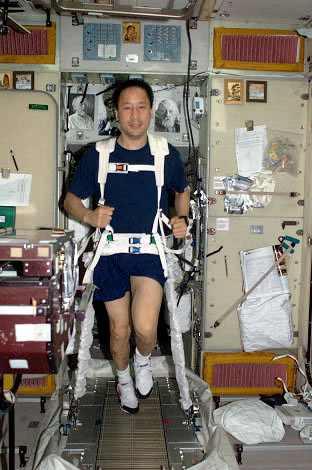































































































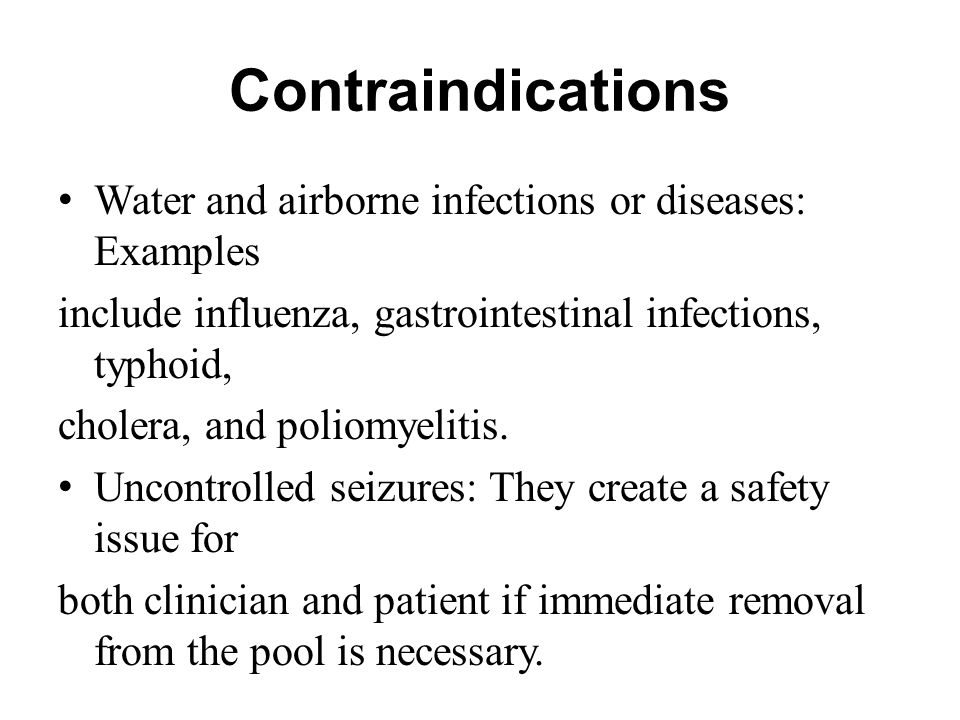 Frequently Asked questions about Aquatic therapy ?
Frequently Asked questions about Aquatic therapy ?

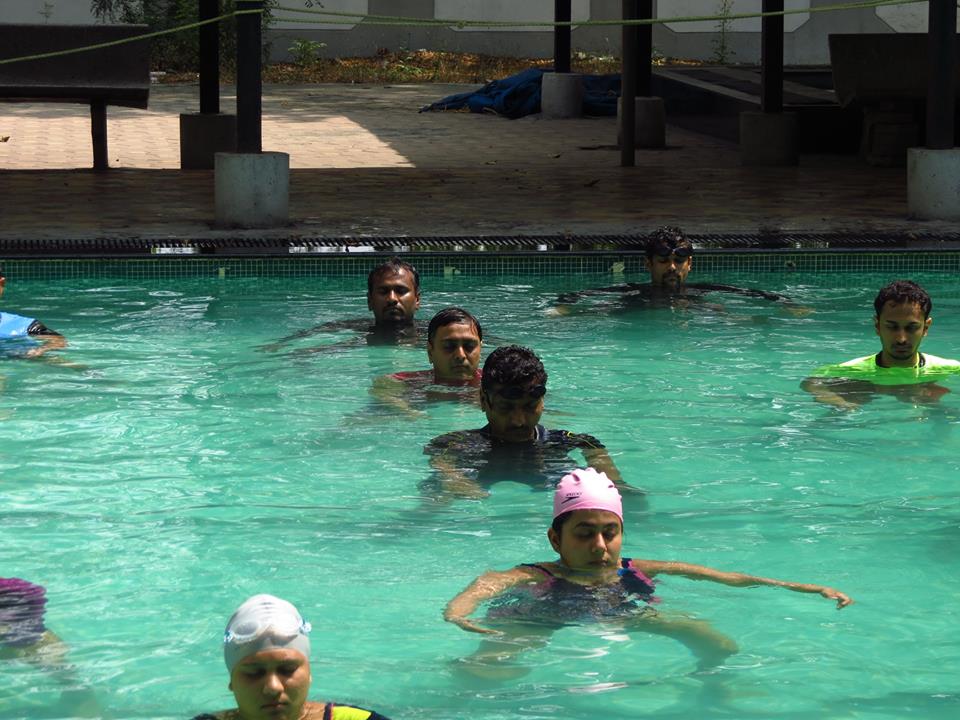
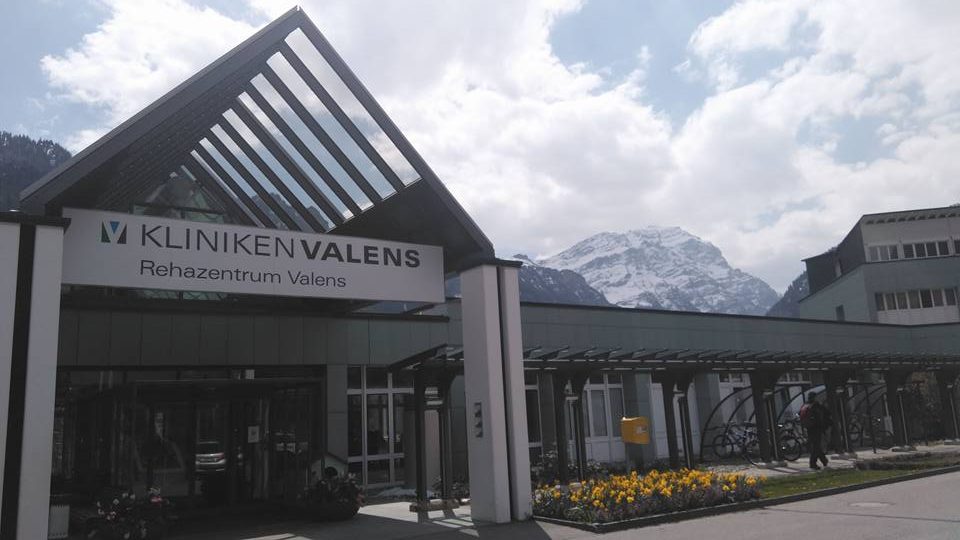























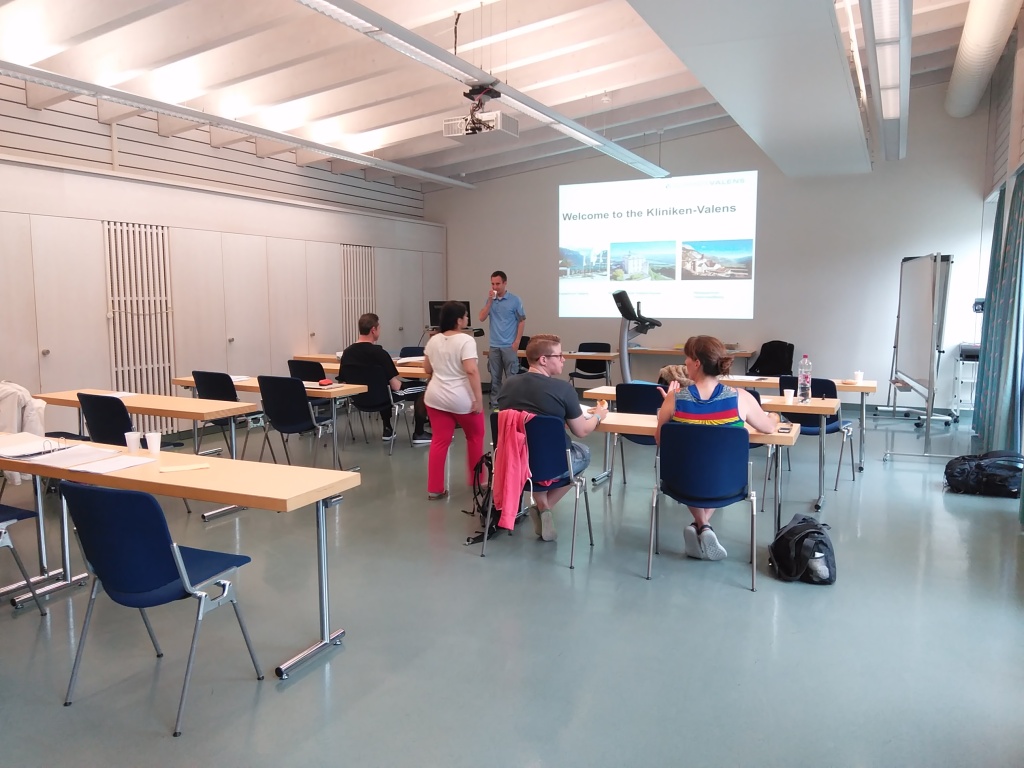












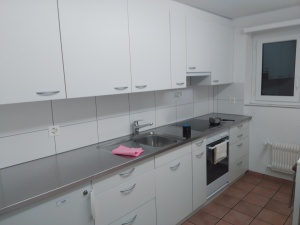
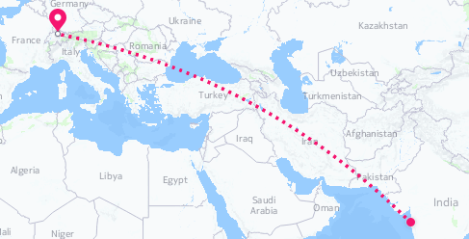 Mumbai to Zurich
Mumbai to Zurich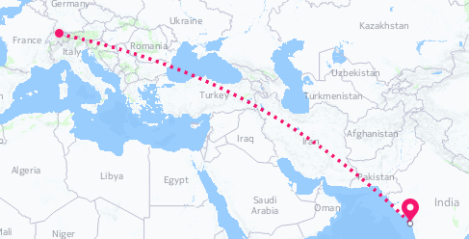 Zurich to Mumbai
Zurich to Mumbai
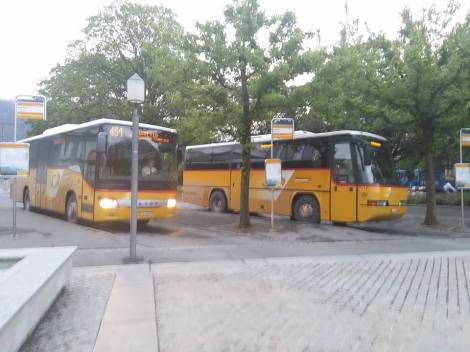


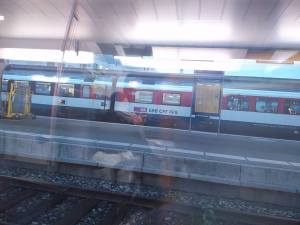
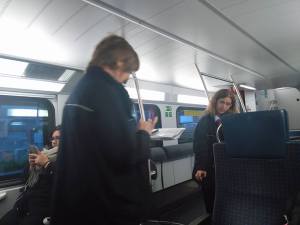




















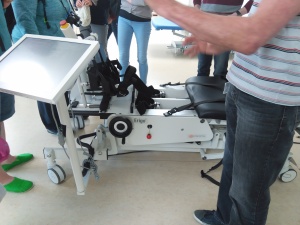









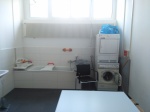






























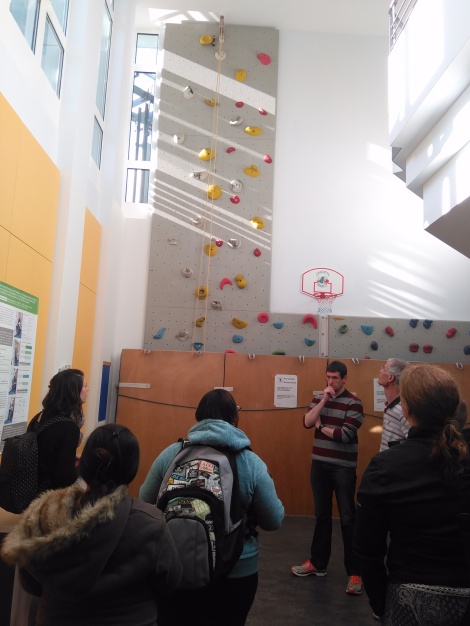



























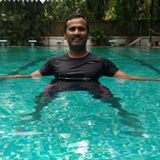
















You must be logged in to post a comment.